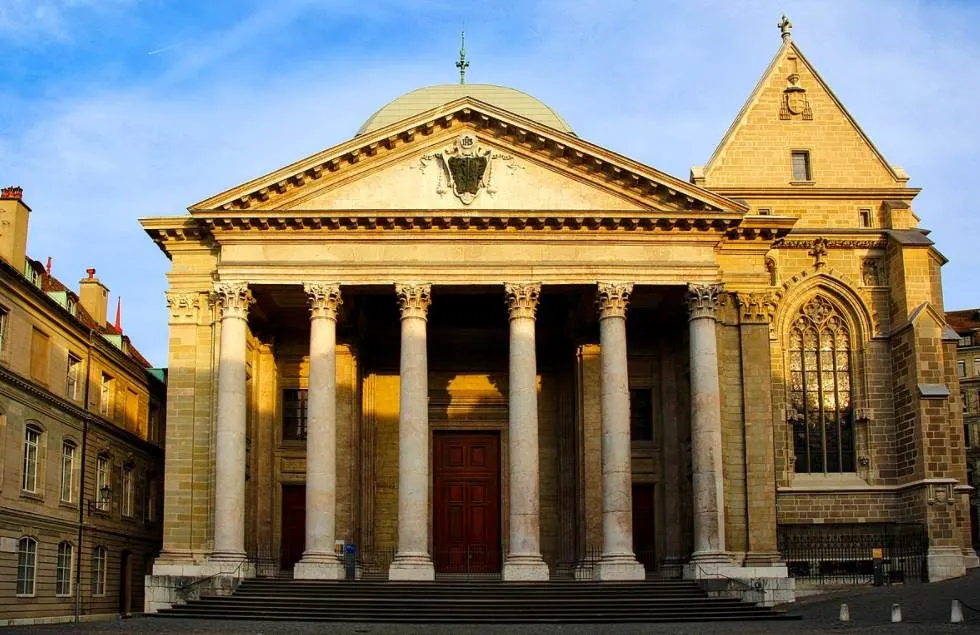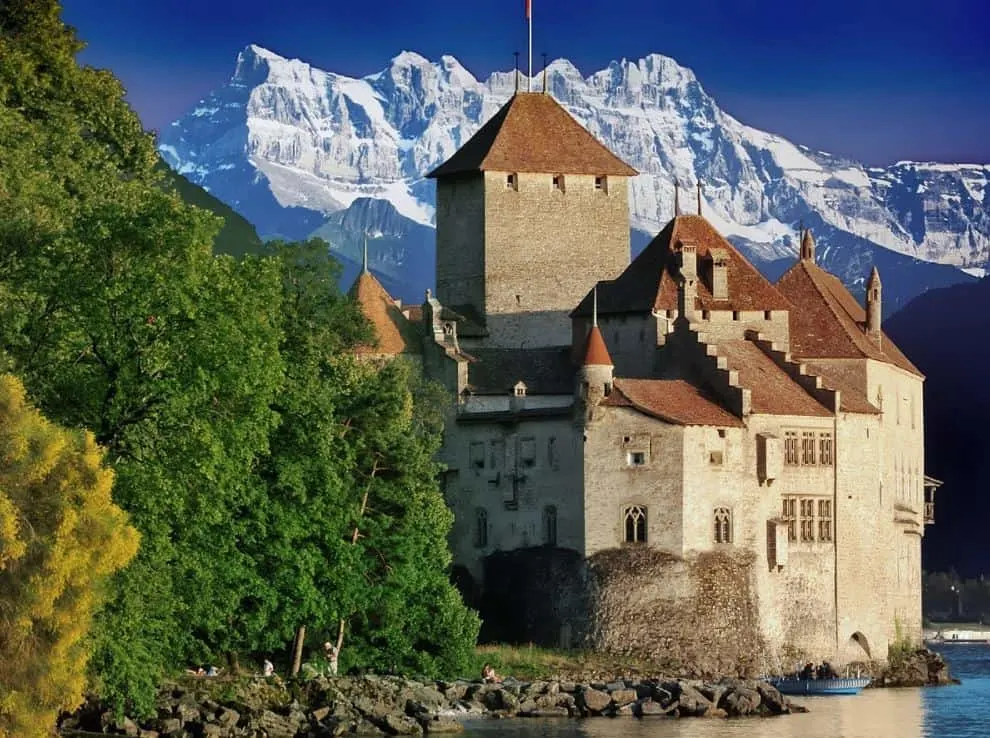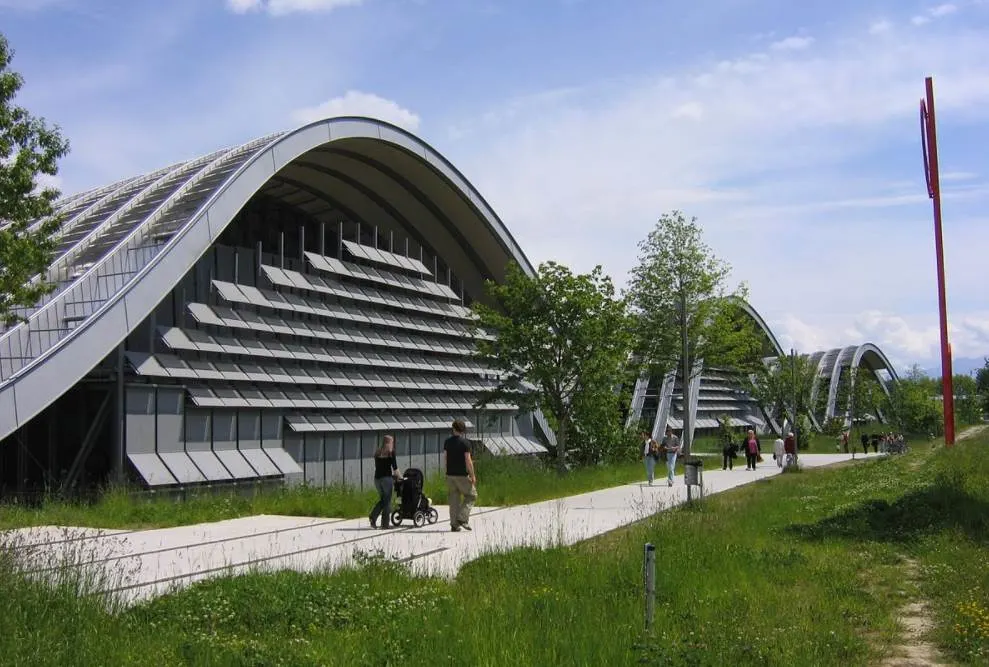This country in Central Europe is for the most part dominated by the largest mountain range in the European Union, the Alps. This also means that many of the tourist attractions in Switzerland are natural landmarks situated within this majestic mountainous area.
The largest cities in the country, Zürich, Geneva, Basel, and the capital Bern, are located on the Swiss Plateau. This is one of the 3 geographic regions that make up the country, situated in between the Alps and the Jura Mountains.
With a population of just 8.5 million inhabitants, it’s one of the smaller countries in Europe as well. Regardless, Switzerland is home to some of the most important international organizations, including the WTO, the WHO, the ILO, the headquarters of FIFA, and the UN’s second-largest office.
Let’s take a closer look at some of the most famous buildings in Switzerland, architectural feats that you must put on your bucket list when you visit this fascinating country.
1. St Pierre Cathedral
St Pierre Cathedral in Geneva was built as a Roman Catholic church in the 12th century on the location of an ancient basilica that stood here since the 4th century.
Although this Gothic cathedral was built as a Roman Catholic church, it was transformed into a Protestant church during the Reformation in the 16th century.
The Neoclassical façade of the building wasn’t added until the 18th century and one of the side chapels that feature the original Gothic design was added in the 1890s.
Official website: St Pierre Cathedral (in French)

2. Chillon Castle
If you would have to choose a castle in Europe with the most picturesque location, then Chillon Castle would be on top of the list.

This island castle is located on the eastern tip of Lake Geneva, one of the most famous lakes in Europe, in the Swiss canton of Vaud. It has a rich history as the original version of the castle dates back to at least the 11th century.
This magnificent castle became the summer residence of the Counts of Savoy in the 12th century and changed hands between the House of Savoy and the Bernese a couple of times throughout its history.
Today, it’s one of the most famous buildings in Switzerland and has been dedicated as a Swiss Cultural Property of National Significance.
Official website: Chillon Castle

3. Geneva Water Fountain
On the other side of Lake Geneva, we can find the city of Geneva, The second-most populous city in Switzerland after Zürich.
This city encircles the western tip of Lake Geneva and one of the most fascinating landmarks in the city can be found right inside this amazing lake called the “Geneva Water Fountain.”
This iconic landmark is locally known as the “Jet d’Eau” and it has become one of Geneva’s main attractions since its installation in 1951.
This was the second fountain here as it replaced an older one that was installed in 1886, just a bit further than where we can see the immense fountain today.
The jet of the fountain can shoot water in the air to an altitude of 140 meters (460 feet). This means it can be seen throughout the city.
Official website: Geneva Water Fountain

4. Ballenberg
If you want to discover historic architecture in rural Switzerland then Ballenberg is the place to go. This open-air museum features over 100 traditional Swiss buildings. It was established in 1978 and is a Swiss heritage site of national significance.
This remarkable museum is located near the town of Brienz in the canton of Bern and the buildings were transported from their original location from all over the country.
The museum was designed as a theme park and is divided into the different regions of Switzerland. This allows you to discover Swiss architecture that you can find in specific locations in the country.
Official website: Ballenberg

5. Abbey of Saint Gall
The Abbey of Saint Gall is a historic monastery and abbey in a Roman Catholic complex of buildings that has been present in the city of Saint Gallen since the year 719.
The abbey was active between 747 and 1805 and was one of the most significant Benedictine abbeys in Europe for multiple centuries. It was constructed on the location where Saint Gall (550-645) built his hermitage.
The city of Saint Gallen was founded as a settlement that developed next to this complex and the former abbey church was transformed into a cathedral in the year 1848.
Official website: Abbey of Saint Gall

6. Roche Tower
Switzerland isn’t a country that is world-famous for its amazing skyscrapers. One of the reasons is the stiff security regulations that the government imposes to preserve safety when an earthquake occurs.
The Roche Tower 1 became the tallest building in Switzerland upon completion which inevitably makes it the most prominent building in the city of Basel. It stands 178 meters (583 feet) tall and features a sloping façade.
The Roche Tower 2 is built right next to it and will surpass the first tower to become the tallest skyscraper in Switzerland. The second tower will have a height of 205 meters (672 feet) and has a similar design.
The building complex was designed by Herzog & de Meuron, a Swiss architecture firm that is famous for designing football stadiums (among many other buildings). They designed the Allianz Arena in Munich and the “Bird’s Nest” stadium in Beijing, to name a few.
Official website: Roche Tower

7. Goetheanum
The Goetheanum is one of the most famous buildings in Switzerland and is located in the town of Dornach in the canton of Solothurn in the northwestern part of the country.
The building serves as the global headquarters of the anthroposophical movement, a philosophy that theorizes that the world of spirituality can be accessed through an experience outside of the senses.
The first Goetheanum on this location was a wooden structure that was built in the early 20th century. It was destroyed by fire on New Year’s Eve of the year 1922 and replaced by the “Second Goetheanum,” the cast concrete building we can see today, shortly after.
The structure is considered to be one of the most prominent examples of Expressionist architecture in the world and one of the architectural highlights in the country.
Official website: Goetheanum

8. Tarasp Castle
Tarasp Castle is a castle that majestically overlooks the former town of Tarasp, a town that has been merged into the town of Scuol in 2015. This town is located in the canton of the Grisons in the eastern part of Switzerland.
It’s unclear when exactly the castle was built, but historians speculate that it dates back to either the 10th or 11th centuries. Its name was derived from the words “Terra Aspera” which means “Wild Earth.”
The castle has switched hands a couple of times and was extensively renovated in the 19th and early 20th centuries. Today, the castle is owned by a company called “Not Vital” and can be used for events, including weddings and exhibitions.
Official website: Tarasp Castle

9. KKL Luzern
KKL Luzern is officially known as the “Kultur- und Kongresszentrum Luzern” or the “Lucerne Culture and Congress Center.” It’s located in the heart of the city of Luzerne and is one of the most prominent landmarks in the city.
The building has multiple purposes and features a concert hall that is renowned for its high level of acoustic quality. It can also be used for meetings and exhibitions and features an art museum as well.
The building was designed by renowned French architect Jean Nouvel and was completed in 1998. Nouvel has designed multiple remarkable structures in the world, including the Torre Glòries (2004) in Barcelona and the Guthrie Theater (2006) in Minneapolis to name a few.
Official website: KKL Luzern

10. Zentrum Paul Klee
The Zentrum Paul Klee is one of the most famous museums in Switzerland and is dedicated to the world of Paul Klee, one of the most renowned Expressionist artists who was also influential with the Cubists and Surrealists.
The museum is located in the eastern part of Bern, the capital of Switzerland, and was designed by renowned architect Renzo Piano. He is world-famous for his work on the Centre Pompidou in Paris in the 1970s.
The idea to build a museum in honor of Klee was made after his daughter-in-law Livia Klee-Meyer donated 690 works of the artist to the city of Bern in 1997. The building was completed in 2005.
The fascinating building consists of 3 smoothly flowing structures that blend into the surrounding landscape.
Official website: Zentrum Paul Klee

